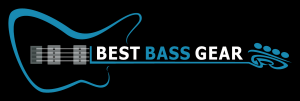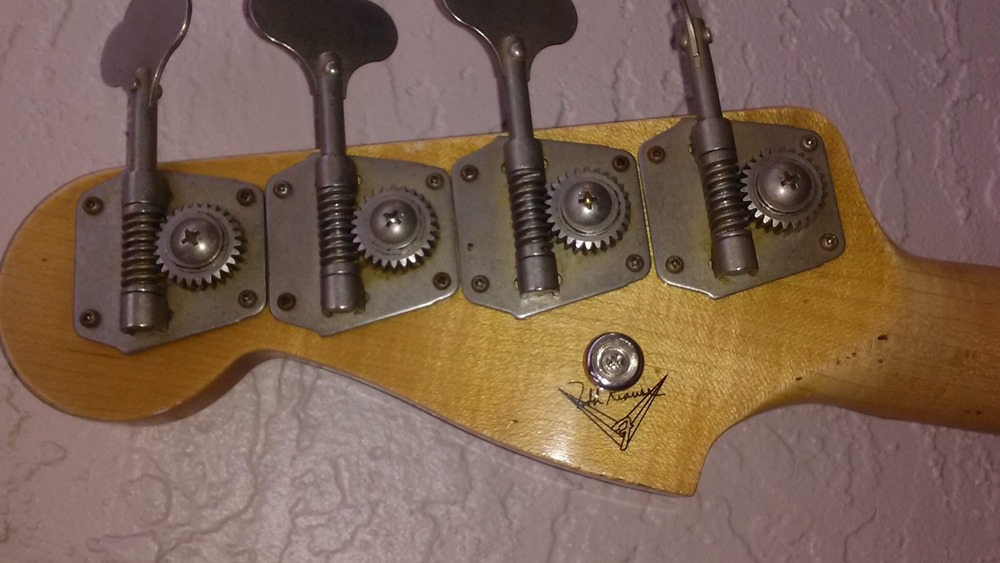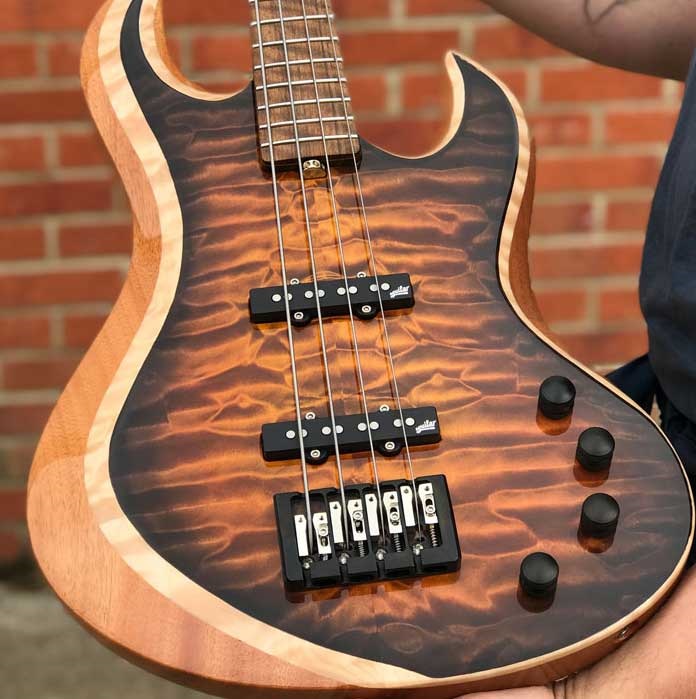Something you will see on vintage Fender basses (and also on reproduction vintage-spec instruments from the Fender Custom Shop if requested) is a strap button on the back of the headstock.
Was this a factory Fender option? Yes, and it is called the hootenanny button. This actually was a factory Fender option introduced in 1960 for the Precision Bass.
What is the purpose of the hootenanny button? Balance when standing while playing the instrument in the horizontal position. Some bassists (albeit few) preferred to wear a guitar strap “Nashville” style like the acoustic guitar players did of the time.
The hootenanny button did not last much beyond the 1960s, as by that time the majority of bass players were very used to playing Fender electric basses horizontally with the front of the strap connected to the button on the top horn.
Would a hootenanny button be useful today?
This answer depends on certain factors.
Got back problems? A strap connected via hootenanny button may provide extra comfort.
Got a multi-scale bass that’s really top heavy? Use of the hootenanny button may cure neck dive issues without having to add extra weight to the rear of the instrument.
Got a standard scale bass with “short horns”? A top horn that does not extend to the 12th fret (such as the Gibson SG Bass) will usually result in neck dive issues. Using a hootenanny button would help out quite a bit here.
“Is there any way get a ‘hootenanny button position’ without drilling a hole in the headstock?”
Yes. You can put a strap on your bass the same way acoustic guitar players do that don’t have a front strap button by use of a tied string under the strings and behind the nut.
You’ll notice that some new guitar straps like this one come with a string tied to the end. That’s not for decoration but rather specifically for tying around a headstock. If you want to try this with your existing strap but don’t have the string, you can use a shoelace.
Be aware that the string tied around the headstock will at some point mar the finish, particularly if your neck is finished with nitrocellulose lacquer.
“Show me how to tie a string around a headstock, please”
Here you go:




This may be a naïve question, but does it affect the neck (extra tension/torque on the headstock, truss rod, et cetera)?
I’ve always wondered about this, but never really had any reason to check into it beyond idle curiosity.
Thanks.
Jamie,
The amount of extra force applied to the neck would be trivial compared to the string tension. I think it can be safely ignored.
-Andy
Had one. My problem was to keep the bass from twisting. The two buttons are on the center-line of the bass and the mass is greater above center-line due to the bigger horn. The top being heavier would want to turn the bass around front to back always tipping the top of the body away from the player. The player would have to actively engage the instrument to keep it from flipping. Annoyed the crap out of me….
If you used the hootenanny strap position for an extended period like years I believe it would twist the neck and damage it.
Probably won’t damage the neck but definitely affects the neck relief/action. The backwards pull also can cause tuning issues as the neck is being pulled on as it is being played.
If you want to see how this device was used by bass players years ago, check out Jim Fielder, bassist for Blood, Sweat and Tears. Believe he’s shown playing it vertically on the first B,S,&T album cover. I’ve also seen a few photos of James Jamerson occasionally playing the same way.
OK, so no one has addressed the big question: Why is it called a hootenanny button? I know a hootenanny is an old name for a social gathering of people, mainly kids or teenagers – a big party if you will. But why name it the hootenanny button?
Hootenanny was a hokey media-cool name for a country/folky acoustic jam in the early 60s. Fender put that button on for the same reason the thumbrest on their bass used to be a tugbar…they expected players to be coming from acoustic guitars, and the headstock is where most acoustic guitar straps attached. So, the jazz and rock players saw the strap button up there and called it hootenanny because it looked like where Chet Atkins or Barry McGuire might wear it….country/folky.